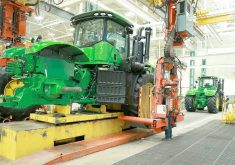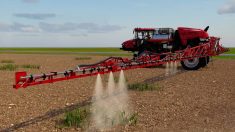Irrigation is one of the agricultural success stories in southern Alberta and one would assume that more would be better, and that would be true except for the political challenges. At this point those challenges would appear to stifle any future large-scale expansion of irrigated land in this province. I am referring to the creation of any significant new water-storage reservoirs or large dams. Thoughts on any such significant future water development would be pounced upon by myriad green groups and federal government agencies. At this point the irrigation industry and the Alberta government do not appear to have the energy or political will to fight any new water development battles.
Read Also

Guarding against misinformation: Do you believe in house hippos?
Misinformation and disinformation run rampant in today’s digital age. Farmers must be wary of the digital dangers and know how to keep themselves safe.
Part of that has to do with big leaps forward in renovating and fine tuning the existing infrastructure to make irrigation more efficient at every level. It’s been an ongoing process for many years and has seen water conservation rise to levels where in some areas up to an additional 20 per cent of water has become available. That has seen irrigation districts in the position of offering additional water allocation to existing permit holders and expanding the acreage for irrigated land. Advancements in irrigation technology and distribution will probably see that progress continue, although there will be a limit. At this point the irrigation industry and its representative organizations seem content to just deal with the incremental efficiencies, which is progress by itself of course.
Another side has to do with what the industry would face if they chose to pursue more large-scale development. In the good old days that was a fairly easy process being that government and society saw irrigation as a way to economically develop an otherwise arid part of the province. I suspect that the development of many of the original reservoirs and canals was merely a matter of filing some documents with a co-operative government. There would be no public input or protest. Even the federal government at the time tended to leave irrigation development up to the province.
All of that has changed of course and the tipping point came in 1992 with the completion of the Oldman River dam. It was originally conceived at least 20 years earlier, with probably little opposition. The main stakeholder at the time was the Peigan Reserve, with its concerns and claims settled by compensation. However, by the time the dam was opened in 1992, green groups were busy protesting its existence and vowing that such a structure would never again be built in Alberta, particularly for irrigation. At the time the protest saw the appearance and involvement of David Suzuki, who was just changing his persona from genetics scientist to radical environmentalist.
Another player that has arrived and that would all but guarantee no future largescale irrigation development was the federal department, Fisheries and Oceans Canada (FOC). That agency since its inception confined its activities to the country’s coasts and large bodies of water like the Great Lakes and Lake Winnipeg. Those locations would seem to be logical areas of interest for that particular agency, and not landlocked Alberta. I believe about 30 years ago the FOC expanded into Alberta under the guise of needing to protect fish habitat. Part of their legal rationale was their responsibility for the Navigable Rivers Act. Apparently their interpretation was that any watercourse that could float a canoe was their responsibility. With an office in Lethbridge in the centre of irrigation country you just know that every possible irrigation concept that might involve even the smallest creek would require massive federal environmental impact studies and other regulatory mischief. That is enough to thwart any largescale irrigation concept forever.
Yet if we are to develop more irrigated land in a hungry world, more water will be needed and that water cannot continue to come from ever increasing water usage efficiencies. The time will come to develop more dams and bigger water reservoirs, and some fish habitat will be disrupted.
Having said that, there is an alternative to more water storage development for irrigation expansion in southern Alberta. The most attractive is the transfer of water from the North Saskatchewan River water basin by pipeline to southern Alberta. Technically it is feasible and viable considering the vastness of energy pipelines in Alberta. Water in that basin is essentially wasted as it flows to Hudson Bay. What better way to use some of it to expand food production by means of more irrigation in southern Alberta.
The arguments against such a diversion tend to be less scientific and more ideological, the fear being that it would be the first step in selling water to the Americans. I suggest its time will come, particularly if water sources decline in southern Alberta due to a changing climate.
———
Atthispointtheirrigation industryandtheAlberta governmentdonotappearto havetheenergyorpolitical willtofightanynewwater developmentbattles…














